Standardization is the adjustment of the ratio of fat to total protein (caseinProtein in milk that precipitates at pH 4.6.) in cheese milk.
Why standardize milk? Standardization is done for economic, regulatory, and cheese and functionality reasons.
Milk that is used for the manufacture of cheeses is priced as Class III milk according to the provisions of the Federal Milk Marketing Orders. Class III milk price is based on skim milk price, butterfat (milkfat) price and nonfat solids price. Essentially, a cheese plant pays for milk components (i.e., fat and protein) and aims to maximize the recovery of the milk components in the cheese while meeting the regulatory standards of identity (SOI) for the cheese, desired qualityFocus on doing things well and producing a product acceptable to consumers, and functional attributes for the cheese with minimal losses of major milk components in the wheyLiquid obtained from cheese manufacture..
The composition of raw milkMilk that has not been pasteurized. is variable depending on breed of cowCondensible out water, feed, season, age and disease. The most common breeds of dairy cowCondensible out water in the U.S. are Holstein and Jersey, but their milk differs in protein, fat and total solids. Holstein milk has an average of 3.2% protein, 3.7% fat, 12.4% total solids and a protein-to-fat ratio of 0.86. Jersey milk has an average of 3.7% protein, 5.1% fat, 14.6% total solids and a protein-to-fat ratio of 0.73.
The following is a guest column from Nana Farkye, PhD, professor emeritus at Cal Poly San Luis Obispo and a member of ADPI’s Center of Excellence, published in the March 29, 2024 issue of Cheese Market News.

Protein and fat content in milk can be accurately and rapidly measured using advanced analytical techniques. Milk contains two types of proteins – caseinProtein in milk that precipitates at pH 4.6. and wheyLiquid obtained from cheese manufacture. proteins. However, there is no rapid and accurate method for measuring caseins – which are most important milk proteins desired for cheesemaking. Therefore, the caseinProtein in milk that precipitates at pH 4.6. content of milk is estimated by multiplying the protein by a factor of 0.78 or 0.80, respectively for milk from Holstein and Jersey cows. Therefore, the average caseinProtein in milk that precipitates at pH 4.6. content of a typical Holstein milk is 2.50% (i.e., 0.78 × 3.2) and that of Jersey cowCondensible out water milk is 2.96% (i.e., 0.80×3.7). Hence, the average caseinProtein in milk that precipitates at pH 4.6. to fat ratios in raw Holstein and Jersey milk are, respectively, 0.68 and 0.58 – corresponding to protein to fat ratios of 0.87 and 0.73, respectively.
To manufacture SOI Cheddar cheese (minimum 50% fat-in-dry matter, FDMFat in the dry matter and maximum 39% moisture) the ideal caseinProtein in milk that precipitates at pH 4.6. to fat ratio is 0.64 – 0.70 (equivalent to protein to fat ratio of 0.80 – 0.90) suggesting the need to standardize raw milkMilk that has not been pasteurized. for cheesemaking.
The options for standardizing cheese milk are:
- Removal or addition fat as cream or
- Addition caseinProtein in milk that precipitates at pH 4.6. as nonfat dry milk, condensed skim or
- Addition of fat and protein using milk processed by ultrafiltration (UF)Membrane process that separates proteins and fats from lactose and minerals. Ultrafiltration is used to produce milk protein and whey protein concentrates..
Options 2 and 3 are most common in cheese plants. In addition, to increase cheesemaking efficiency, the total solids in a cheese vat are increased while keeping the caseinProtein in milk that precipitates at pH 4.6. to fat ratio constant. It is not uncommon in modern large commercial cheese plants to use standardized milk containing 4-5% protein and 14-16% total solids in a cheese vat.
The efficiency and profitability of cheese manufacture involves efficient recovery of the major milk constituents (i.e., caseinProtein in milk that precipitates at pH 4.6. and fat) into cheese along with moisture and salt added during cheesemaking. In traditional cheesemaking, caseinProtein in milk that precipitates at pH 4.6. forms the structural network of the curd that retains fat and moisture while wheyLiquid obtained from cheese manufacture. (serum) proteins are lost in the wheyLiquid obtained from cheese manufacture.. Earlier research shows that although good qualityFocus on doing things well and producing a product acceptable to consumers Cheddar cheese can be made from milk standardized to caseinProtein in milk that precipitates at pH 4.6. to fat ratio of 0.64 – 0.70, standardization of Cheddar cheese milk to caseinProtein in milk that precipitates at pH 4.6. to fat ratio of 0.7 results in the most efficient utilization of milkfat and caseinProtein in milk that precipitates at pH 4.6.. Within the ideal limits of caseinProtein in milk that precipitates at pH 4.6. to fat ratio, the yield of cheese made per pound of fat in the cheese milk decreases with increasing fat content of the milk although milkfat recoveries higher than 93% are achievable using modern equipment and cheesemaking techniques. On average, about 2.7-2.9 pounds of cheese containing 37-38% moisture is produced per pound of milkfat in standardized milk.
Higher fat in milk results in higher FDMFat in the dry matter in the cheese. However, the optimum is 53-54% FDMFat in the dry matter in good qualityFocus on doing things well and producing a product acceptable to consumers Cheddar cheese.
The caseinProtein in milk that precipitates at pH 4.6. content of standardized milk positively affects cheese yield. Amenu and Deeth (The Australian Journal of Dairy Technology. Vol. 62, No. 3 – October 2007) reported that a reduction of the caseinProtein in milk that precipitates at pH 4.6. content in milk by 0.1% reduces Cheddar cheese yield potential by 0.5 kg/100 kg milk (1.1 pounds per 220 pounds of milk) which is a significant economic loss to a cheese plant processing about 53 million gallons of milk a year. There is a relationship between caseinProtein in milk that precipitates at pH 4.6. (protein) content in standardized milk and moisture content of cheese. Literature shows that one pound of caseinProtein in milk that precipitates at pH 4.6. holds about 1.5 pounds of water. Because of the role of water in various biochemical reactions that occur in cheese during ripeningChanges during the aging of a cheese, moisture control in cheese is important. The amount of moisture in the nonfat substance (MNFS) of cheese ranges from 50 – 58%. The higher the MNFS in cheese, the faster the rate of breakdown and more rapid deterioration of cheese after it reaches its peak flavor and body attributes. Consequently, it is preferable to target 53-54% MNFS after 1-month of ripeningChanges during the aging of a cheese for Cheddar cheese that is destined to be sold as aged or ripened cheese.
Therefore, it is important to maintain a constant protein (caseinProtein in milk that precipitates at pH 4.6.) to fat ratio for any specific cheese regardless of the finished total solids content of the standardized cheese milk is a cheese vat. In addition to yield maximization, application of modern cheesemaking techniques to control cheese moisture thereby controlling FDMFat in the dry matter and MNFS optimizes cheese qualityFocus on doing things well and producing a product acceptable to consumers.
